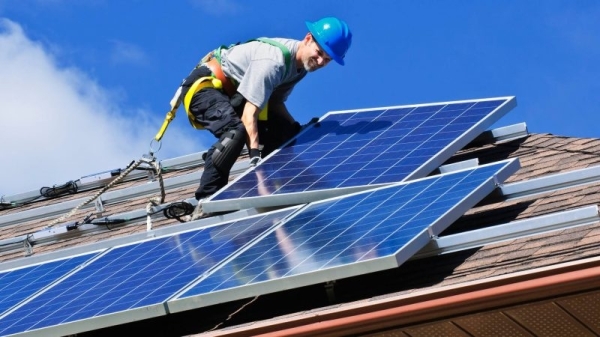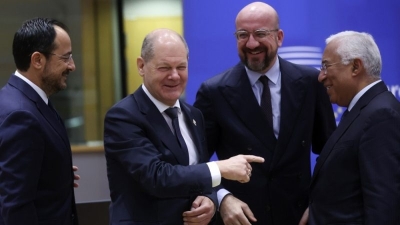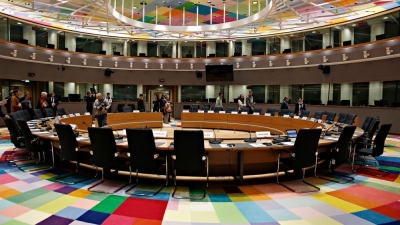EU eyes ‘billions’ worth in flexibility from local electricity grids

As Europe shuts down its remaining coal power plants and turns away from volatile gas for electricity generation, it is also losing key flexible power supplies that can be switched on at the last minute to keep the lights on during peak hours.
To replace those, the European Union hopes to tap into what many consider the cheapest fuel of all – energy efficiency technologies, or the fuel that isn’t burned.
Chief among them is demand-response solutions allowing households to manage their electricity consumption.
“There is a lack of non-fossil flexibility, such as demand response and storage,” said EU energy commissioner Kadri Simson in a speech at the 2023 summit of SmartEn, a trade association promoting demand-side flexibility technologies held on Wednesday (19 April).
“These solutions directly compete with gas-fired generation and thus reduce our dependence on it,” Simson said at the event. She added that they are also “a crucial enabler” for wind and solar power, which are expected to be used to meet EU climate goals.
The energy crisis triggered by Russia’s war in Ukraine has highlighted the urgent need to replace fossil fuels in power generation, Simson added.
But contrary to coal and gas, wind and solar are non-dispatchable sources of electricity, meaning they need backup from other flexible energy sources to keep the grid in balance, or else the European Union could face blackouts.
And with growing numbers of electric cars and heat pumps deployed across Europe, “the next crisis might be local” because of additional stress put on the power distribution grids at the local level, said David Villa, the executive director of SmartEn.
According to Simson, the EU’s daily flexibility needs are expected to increase by 133% between 2021 and 2030 because of the switch to renewables. “And comparing 2050 to 2030, a further increase on average by 250% is needed in the EU,” she added.
Demand-side flexibility covers a wide range of technologies like electric vehicles that can store energy and recharge at night when power is cheapest, digitally-connected appliances in buildings that can be controlled remotely, and solar panels coupled with home batteries, which can inject electricity back into the grid when demand is highest.
According to an industry study published last year, if those technologies were deployed to their full potential, EU consumers could save more than €71 billion on their electricity bills every year.
The study found that it would also reduce the need for renewable electricity curtailment by 61% before the end of the decade, bringing more clean energy to consumers without having to install additional wind and solar farms.

Flexibility in power sector could slash consumer bills by €71 billion, study finds
A first-of-its-kind study on demand-side flexibility – the ability for households to change their energy consumption patterns based on external signals – shows that EU consumers could save more than €71 billion on their electricity bills every year.
Market still in its infancy
However, the EU market for demand-side flexibility is still in its infancy and driven mainly by solar self-consumption in southern European countries like Italy, Spain and Portugal, said Lucinda Murley, a senior analyst at consulting firm LCP Delta.
“It’s not wide scale yet,” she explained, saying the challenge is integrating national markets currently operating separately. “There are literally billions of euros in these markets that are accessible for demand-side flexibility”, but which are not being tapped yet, she told participants at the event.
The European Commission is aware of the challenge and has urged EU countries to rapidly implement the 2019 electricity market directive, which opens up the bloc’s wholesale power market to companies offering demand response services.
“In many member states, demand response is still lacking this access to wholesale markets contrary to the requirements of the Clean Energy Package”, which entered into force in 2019, Simson told event participants.
Brussels tabled a further reform of EU electricity market rules last month to accelerate the process, requiring EU countries to define national objectives for demand-side response and storage. The draft law also enables grid operators to launch auctions for electricity demand reduction at peak hours, which will be open to flexibility services.
New EU right to energy sharing – and saving
In addition, the proposed reform introduces a new right to energy sharing for consumers that makes it easier for households to self-produce electricity using solar panels, share the surplus with neighbours and feed the electricity back into the grid as part of so-called energy communities.
However, the industry believes more can be done to unlock demand response from local power grids.
Michael Villa, the executive director of Smarten, welcomed Commission’s plans to extend an obligation to slash electricity demand by 5% during peak hours. The measure, introduced during the energy crisis last year, will be made a permanent feature of the EU’s electricity market design under the Commission’s proposal, which still needs approval from EU member states and the European Parliament.
But Villa believes this ‘peak shaving’ mandate should not only be assigned to transmission system operators (TSOs) managing high-voltage power lines but also to distribution system operators (DSOs), which manage the low-voltage cables connected to individual homes.
TSOs already provide a wide range of so-called ‘ancillary services‘ to keep the grid in the balance every 15 minutes, and Villa says DSOs should also be allowed to participate in those markets to unlock flexible resources at the local level – such as solar panels, electric vehicles and home batteries.
“In Ireland, for example, it is the DSOs which are beating the peak, not only the TSO,” Villa told EURACTIV.
According to Villa, the EU’s new “right to energy sharing” should also be broadened to include energy-saving services instead of focusing only on small-scale renewables like solar rooftops. This would allow whole neighbourhoods to monetise their flexibility while helping to keep the broader electricity system in balance – a concept Villa calls “district energy self-balancing”.
But tapping into the potential of local flexibility is challenging and requires close coordination with small grid operators at the local level to ensure a smooth process when it comes to procurement and activation of flexibility services.
In Germany alone, there are 865 DSOs – all with different technical requirements for connections with the high-voltage grid, said Moritz Lauster from Viessmann, the German heating appliance manufacturer.
Digitalisation is seen as a critical step to unlocking local flexibility, and the European Commission presented an action plan last year to digitalise the energy system.
More on the same topic...




